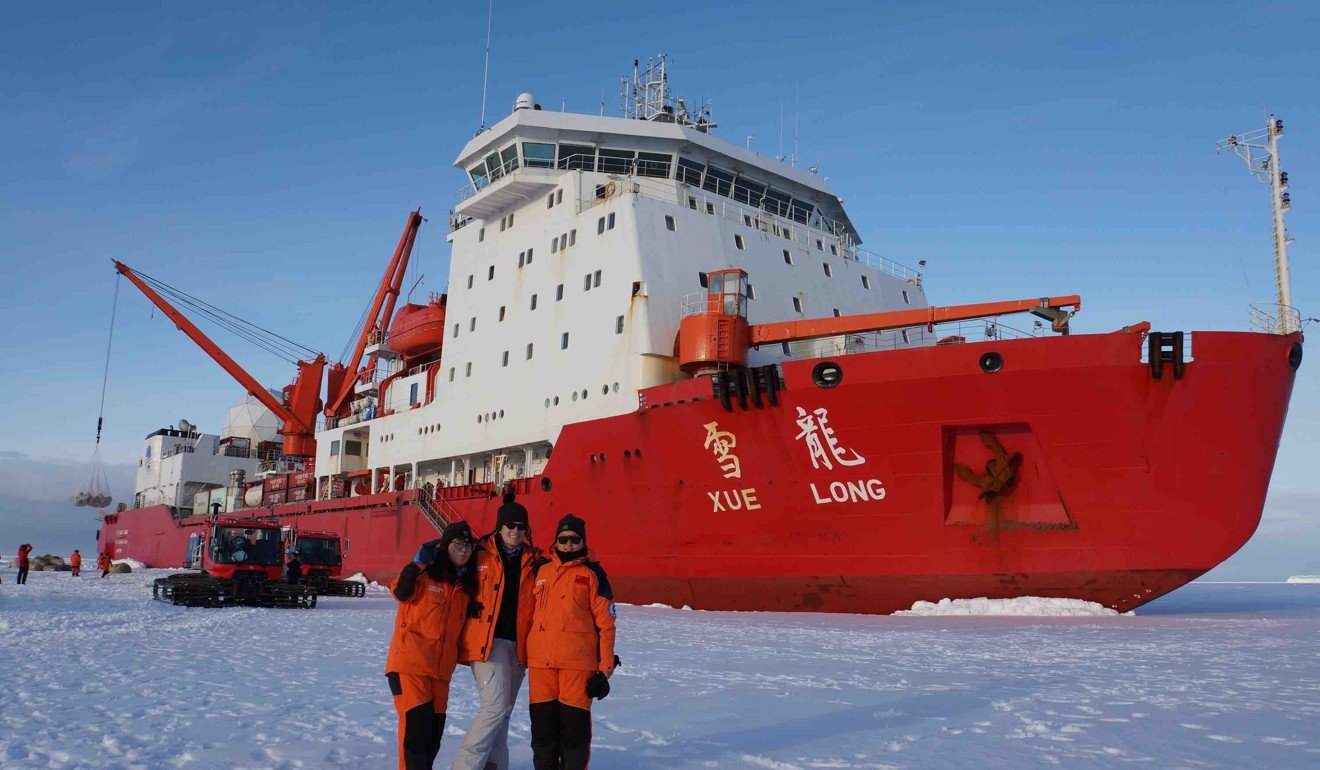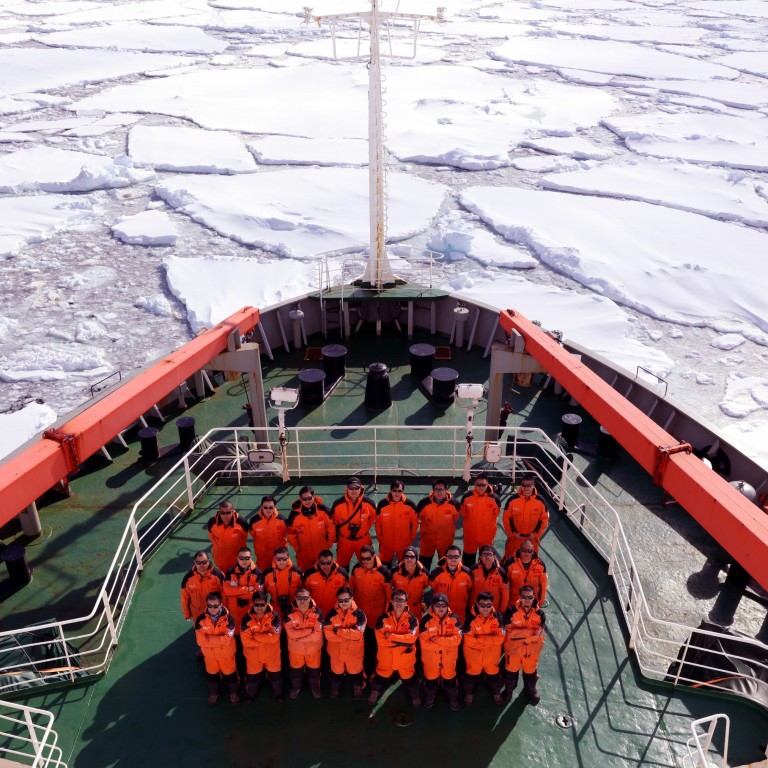
Could the Arctic chill US-China relations still further?
- US Secretary of State Mike Pompeo warns against Beijing’s ‘aggressive behaviour’ in polar region
- But observers say the US is overestimating the threat from China, which is more interested in scientific research than military matters
Tensions between China and the US have spilled over into the Arctic with US Secretary of State Mike Pompeo warning that Beijing’s “aggressive behaviour” in the polar north could create a “new South China Sea” conflict.
Speaking at a meeting of the Arctic Council – a high-level forum with representatives from eight countries – Pompeo said the resource-rich region had become “an arena of global power and competition”, and that the US was planning to strengthen its presence there to keep strategic rivals Russia and China in check.
“Just because the Arctic is a place of wilderness does not mean it should become a place of lawlessness,” he said in a speech in Rovaniemi, northern Finland, on Monday.
“China’s pattern of aggressive behaviour elsewhere will inform how it treats the Arctic.”
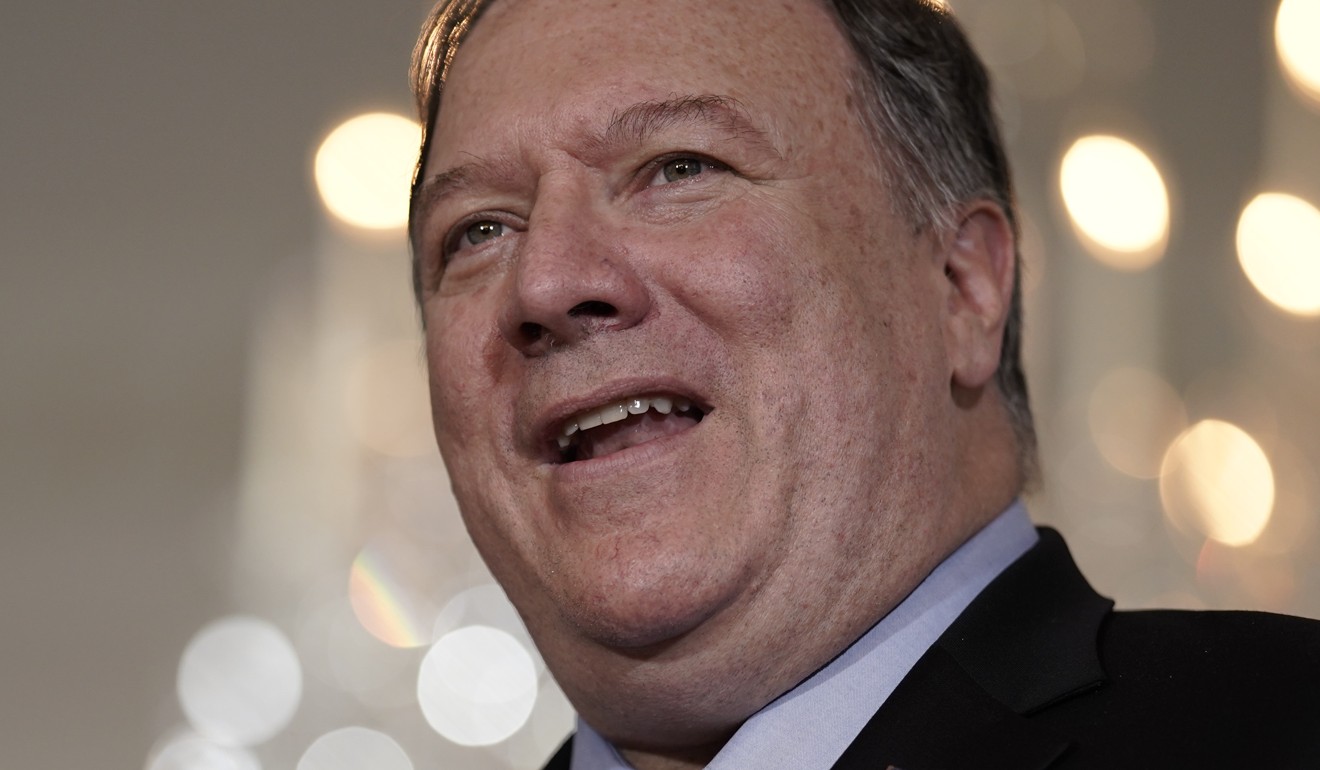
He also accused Beijing of using civilian polar research missions to advance its military and commercial goals, including launching the “Polar Silk Road” for trade and shipping, which he said had raised doubts about its intentions.
“Do we want the Arctic Ocean to transform into a new South China Sea, fraught with militarisation and competing territorial claims?” he said.
Pompeo cancels Germany visit after sinking Arctic accord
Pompeo also questioned Beijing’s attempt to style itself as a “near Arctic state”, noting that the most northerly point of China lay 1,450km (900 miles) outside it.

Observers said that Pompeo’s comments reflected the Arctic’s growing role in geostrategic competition between the world’s two largest economies, which has intensified on several fronts, from trade and technology, to espionage, Taiwan and the South China Sea. Beijing’s territorial claims and military build-up in the disputed waterway has threatened to become one of the biggest flashpoints between the two powers.
“This is not an individual case but should be put into the bigger context of China-US relations and the United States’ grand strategy against China,” said Wang Chuanxing, a polar researcher at Tongji University in Shanghai.
Compared with previous US governments that were open to cooperation with China on issues like economic development, national security, environmental protection and scientific research, the Trump administration had taken a tougher line as part of a containment strategy against Beijing, he said.
Russia’s plans for Arctic gas may provide alternative source for China
Despite not being an Arctic nation, links between China and the region should not be denied, he said.
“China has no political claims in the Arctic, which is a precondition for it to participate in Arctic affairs, but that doesn’t mean that the Arctic is not a global commons,” Wang said.
“China, like Japan and South Korea, is closely connected to the Arctic in respect of not just global governance but also environmental protection.”
Conflict in the region would not benefit anyone, he said.
“Both China and the US are great powers, but if the US wants to return to a cold war or hot war that is something that nobody can afford to lose.”
All in the name of science
China’s presence in the Arctic is nothing new. Since making its first voyage in 1999, the nation’s polar research vessel Xuelong has conducted nine scientific expeditions in the polar north. In 2004, China opened its first scientific research station, Yellow River, in Ny Alesund in the Spitsbergen archipelago in Norway.
“China’s activities in the Arctic started with scientific research related to climate change,” said Cheng Baozhi, a polar affairs expert at the Shanghai Institutes for International Studies.
He said that as Beijing’s economy and geopolitical influence had grown, so too had its activity in the polar area.
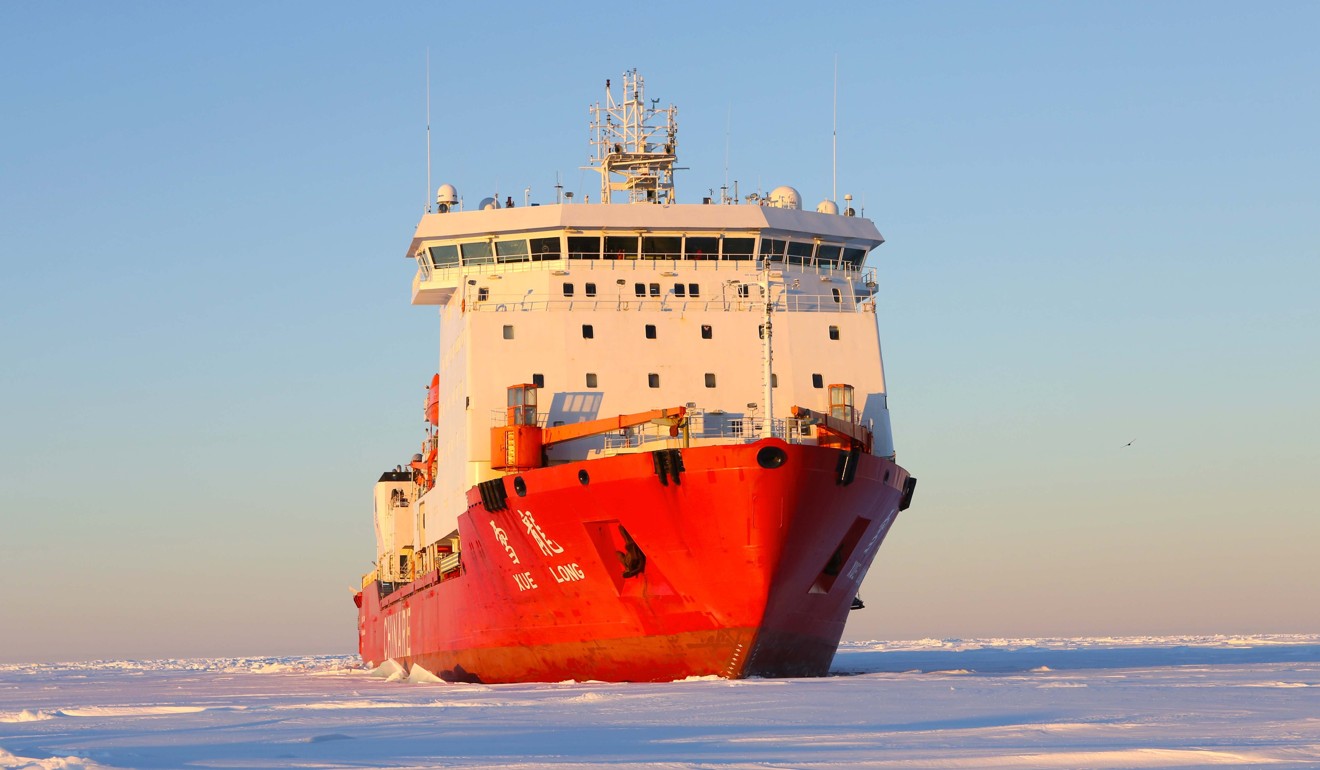
In 2013, China, Japan, South Korea, India and Singapore were admitted to the Arctic Council as observers, alongside full members Canada, Denmark, Finland, Iceland, Norway, Russia, Sweden and the US.
That paved the way for China’s first-ever Arctic Policy, published last year and in which Beijing declared itself a “near Arctic state”. It also said the “Polar Silk Road” was an extension of the “Belt and Road Initiative”, Chinese President Xi Jinping’s signature project to develop an intercontinental network of railways, ports, pipelines, power grids and motorways.
“Although the Chinese government has said its primary interests in the Arctic are scientific cooperation and environmental research, economic concerns are starting to move to the forefront of its Arctic diplomacy,” said Marc Lanteigne, an associate professor at the University of Tromsø in Norway.
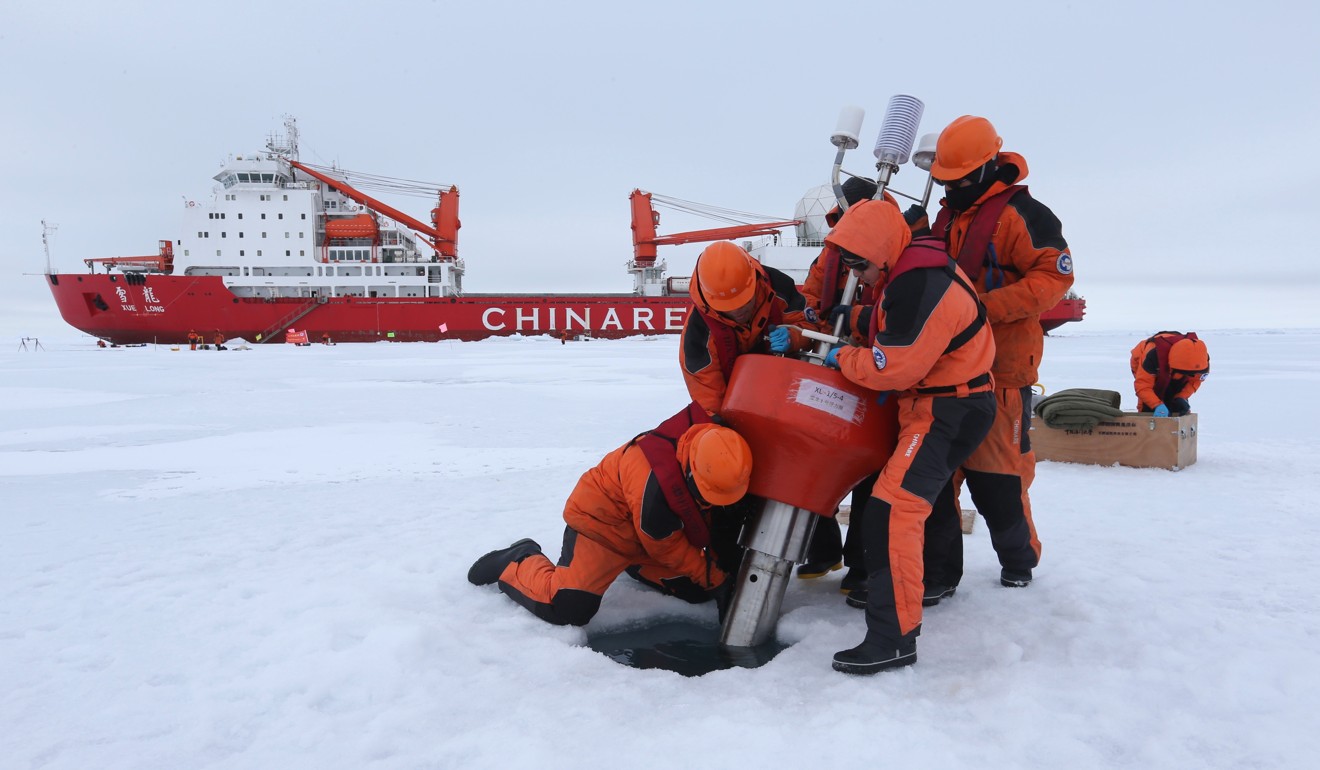
Chinese firms have been extending Beijing’s role in the region. State-owned shipping company Cosco is now the most active player in the Northern Sea Route along Russia’s north coast, while Chinese investors are involved in a bridge construction project across the Rombaken fiord in the Arctic Circle in Norway and mining projects in Greenland.
In March, the privately owned Chinese firm Touchstone Capital Partners committed US$17 billion for an underground tunnel project between the Finnish and Estonian capitals of Helsinki and Tallinn.
With China’s second Arctic vessel, the Xuelong 2, set to make its maiden voyage this year, state-owned China General Nuclear Power Group is inviting bids to build what could be the world’s biggest nuclear-powered icebreaker. Lanteigne said the move could be seen by the US as a challenge to its defence establishment in the region.
Russian partnership
While Beijing has been steadily increasing its presence in the Arctic, its biggest partner in the region remains Russia.
Controlling over half the Arctic coastline – its Northern Sea Route is the region’s busiest shipping route – Moscow has been keen to stake its claim in an area that scientists believe is home to billions of barrels of oil and trillions of cubic feet of natural gas.
With its economy struggling due to the sanctions imposed by the West after its annexation of Crimea in 2013, Russia has found it hard to resist the offer of Chinese investment.
China is the biggest foreign investor in Russia’s liquefied natural gas developments in the region, including the Yamal LNG project, which has been supplying gas to east China’s Jiangsu province from Siberia since July last year.
Last month, state-owned China National Petroleum Corporation and China National Oil and Gas Exploration and Development Corporation signed binding deals with Novatek, Russia’s top privately owned gas producer, to buy a 20 per cent stake in a second Arctic LNG project, known as Yamal LNG 2.
“The Yamal projects are flagships not just for China-Russia trade ties but also the belt and road and the Polar Silk Road,” Cheng said.
“Under the Yamal projects, China’s capacity in shipbuilding, technical development and oil exploration have been significantly improved.”
Why China and Russia have their eyes on the Arctic
In his speech on Monday, Pompeo said that between 2012 and 2017 China invested nearly US$90 billion in the Arctic and that both Beijing and Moscow intended to benefit from the advantages of the Northern Sea Route, where the former was expected to bankroll everything from ports to navigation facilities.
“We’re concerned about Russia’s claim over the international waters of the Northern Sea Route, including its newly announced plans to connect it with China’s Maritime Silk Road,” he said.
“In the Northern Sea Route, Moscow already illegally demands other nations request permission to pass, requires Russian maritime pilots to be aboard foreign ships, and threatens to use military force to sink any that fail to comply with their demands.”

Growing US concerns
Lanteigne said the increased cooperation between China and Russia in the Arctic was a concern for the US, and after nearly two years of being largely silent on the issue was now ramping up the rhetoric and increasing its military presence there.
In January, US Air Force General Terrence O’Shaughnessy, who heads the US Northern Command, said the Arctic “is now the front line in our defence” against potential strikes on North America.
Despite its harsh environment, the Arctic has great security significance. Submarines operating in its waters are almost impossible to detect from the air, while the region offers the shortest flight path for intercontinental ballistic missiles and nuclear armed intercontinental bombers in a nuclear war.
Russia seeks Chinese support in developing Arctic shipping routes
Pompeo said on Monday that Washington was “fortifying America’s security and diplomatic presence” in the Arctic, through more military exercises and the use of icebreakers.
Last autumn, the USS Harry S. Truman became the first American aircraft carrier in nearly three decades to sail north of the Arctic Circle for an extended period.
But Cheng said the US had overestimated Beijing’s agenda in the Arctic, especially in terms of its security interests.
“To China, non-traditional security elements like shipping safety and climate change are more important,” he said. “Military interests are not a priority.”
Lanteigne said Pompeo’s likening of the Arctic Ocean to the South China Sea was “a poor attempt to create a false equivalency” as most of the resources in the Arctic were within the territorial boundaries of the Arctic states and its waters had been clearly demarcated under the United Nations Convention on the Law of the Sea.
“China made it clear in the 2018 Arctic policy white paper that while non-Arctic states have no right to claim Arctic territory they should have the right to engage in economic and scientific activities in the region,” he said.
“Also, the US is taking issue with both the Northern Sea Route and the Northwest Passage being seen as internal waters by, respectively, Russia and Canada. But this has nothing to do with China.”
